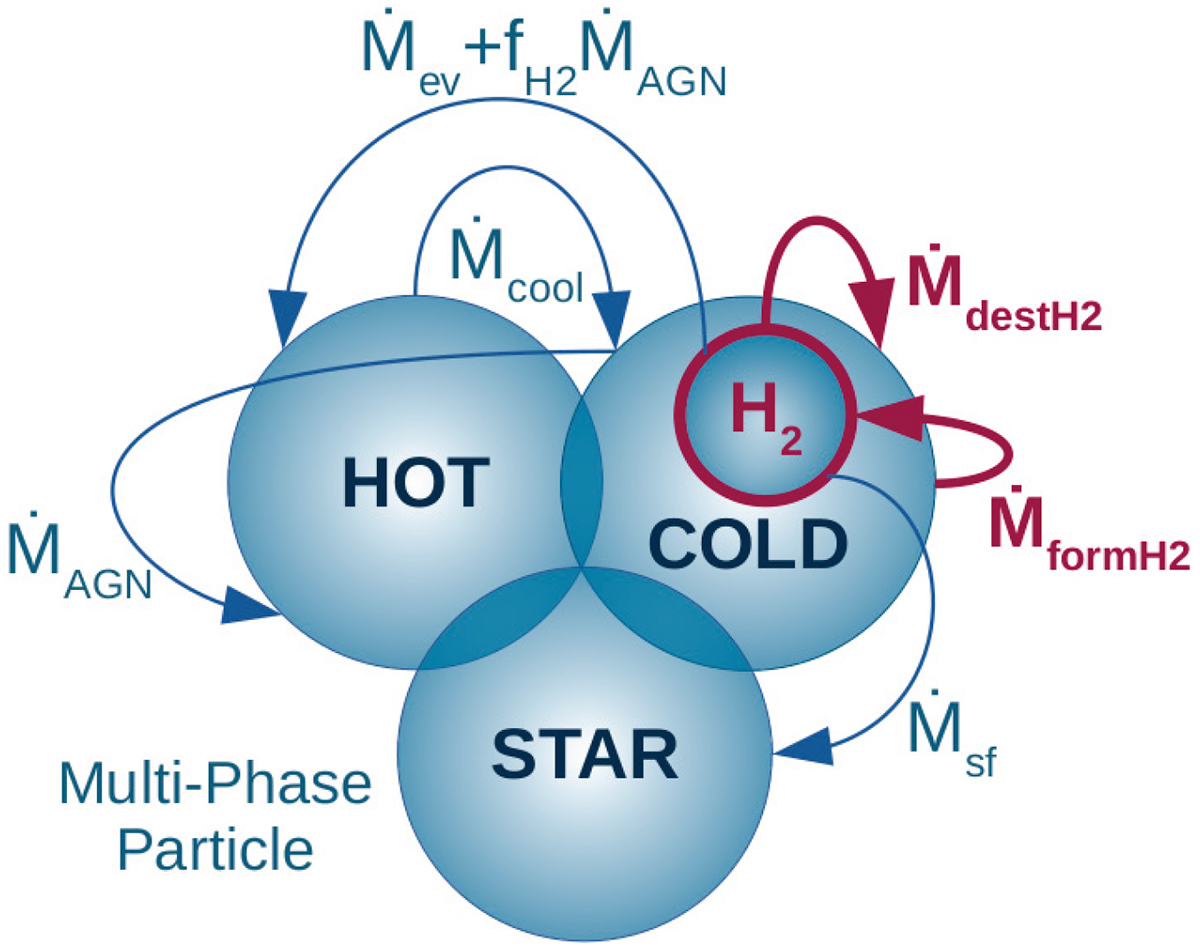Fig. 1.

Download original image
Schematic view of the mass fluxes in a multi-phase gas particle. Gas cooling moves mass from the hot to the cold phase at a rate Ṁcool. Within the cold phase, an H2 reservoir begins to grow. ![]() is the H2 formation rate determined by the particle dust content and the number density of atomic hydrogen, which in turn is computed from the cold phase mass.
is the H2 formation rate determined by the particle dust content and the number density of atomic hydrogen, which in turn is computed from the cold phase mass. ![]() is the H2 destruction rate by LW photons, which transports mass from the molecular reservoir back to the cold phase. Ṁsf is the rate at which molecular gas creates a virtual stellar phase, which is contained within the gas particle until a stellar particle is stochastically spawned. Further destruction of the molecular mass occurs due to the action of massive stars and AGN, at rates Ṁev and
is the H2 destruction rate by LW photons, which transports mass from the molecular reservoir back to the cold phase. Ṁsf is the rate at which molecular gas creates a virtual stellar phase, which is contained within the gas particle until a stellar particle is stochastically spawned. Further destruction of the molecular mass occurs due to the action of massive stars and AGN, at rates Ṁev and ![]() , respectively, where fH2 represents the fraction of H2 in the cold phase. AGN also moves material from the cold to the hot phase at a rate ṀAGN
, respectively, where fH2 represents the fraction of H2 in the cold phase. AGN also moves material from the cold to the hot phase at a rate ṀAGN
Current usage metrics show cumulative count of Article Views (full-text article views including HTML views, PDF and ePub downloads, according to the available data) and Abstracts Views on Vision4Press platform.
Data correspond to usage on the plateform after 2015. The current usage metrics is available 48-96 hours after online publication and is updated daily on week days.
Initial download of the metrics may take a while.


